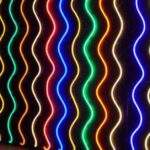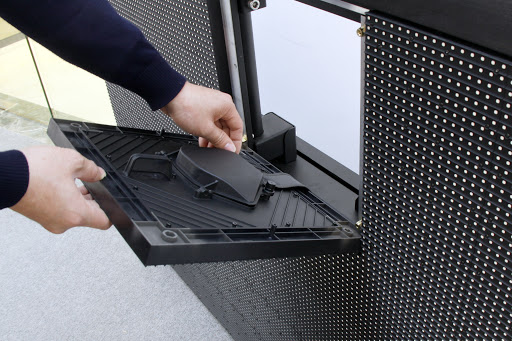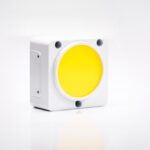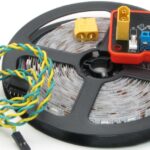
Maximizing The Lifespan of your LED Screen: The Performance and Longevity
Maximizing The Lifespan Of Your Led Screen Light-emitting diode (LED) screens have become popular. LED technology offers stunning visuals and energy efficiency, from the colossal displays illuminating Times Square to the sleek TVs adorning our living rooms. However, like any electronic device, LED screens have a finite lifespan. The good news is that with proper care and maintenance, you can significantly maximize your LED screen’s lifespan and get the most out of your investment.
This article delves into the factors affecting LED screen lifespan and provides actionable tips to maximize its longevity. Whether you own a giant outdoor billboard or a home theater setup, understanding these principles will ensure your LED screen continues to deliver vibrant visuals for years.
Importance of Maximizing the Lifespan of Your LED Screen:
Expand on why it’s crucial to extend the lifespan of LED screens. Discuss the financial benefits for businesses and individuals, such as reduced replacement costs and lower energy consumption over time. Highlight the environmental advantages, such as less electronic waste and a reduced carbon footprint. Emphasize how maximizing screen lifespan contributes to a better user experience by ensuring consistent performance and image quality.
Factors Affecting LED Screen Lifespan
Here are some factors affecting the lifespan of your LED screen:

- Usage: The more you use your LED screen, the faster the LEDs degrade. This applies to both the total operating hours and the intensity of use. Keeping your TV on for background noise or running an outdoor billboard at full brightness 24/7 will shorten its lifespan. You can improve it by turning it on for specific viewing times and adjusting brightness levels to maximize the lifespan of your LED screen.
- Heat: LEDs generate heat during operation. Excessive heat enhances the degradation of LEDs and other internal components, reducing their lifespan. This is especially true for outdoor LED displays exposed to direct sunlight or high ambient temperatures.
- Brightness and Contrast: Running your LED screen at maximum brightness and contrast settings puts additional stress on the LEDs, leading to faster degradation. Finding a comfortable balance between picture quality and energy efficiency is critical.
- Power Fluctuations: Sudden spikes or dips in voltage can damage the delicate electronics within your LED screen. Using a surge protector helps safeguard your investment from such power fluctuations.
- Environment: Exposure to dust, moisture, and extreme weather conditions can significantly impact your LED screen’s lifespan. Dust buildup can trap heat, while moisture can lead to corrosion. Outdoor LED displays require proper weatherproofing and ventilation to combat these elements.
- Content Displayed: LEDs wear out unevenly depending on the colors displayed. Screens displaying predominantly static images with high white or red content will experience faster degradation in those specific color-emitting LEDs.
Strategies for Maximizing the Lifespan of Your LED Screen
Implement the following strategies for maximizing the lifespan of your LED screen :

- Adjust Brightness: Reduce the brightness level to a comfortable viewing experience. This not only saves energy but also extends the life of the LEDs. Most screens have automatic brightness sensors that adjust the level based on ambient light.
- Power Management: Turn off the LED screen when not in use. Even short breaks can make a difference, especially for displays operating continuously. Some models offer features like auto-shutoff timers for added convenience.
- Content Management: Avoid displaying static images for extended periods. Static images can cause image burn-in, where a faint outline of the image remains visible even when displaying different content. Use screen savers or employ software that cycles through content to prevent burn-in.
- Temperature Control: Ensure proper ventilation and cooling for your LED screen. For outdoor displays, consider using temperature-controlled enclosures to maintain optimal operating temperatures.
- Cleaning: Regular cleaning removes dust, dirt, and debris that can obstruct airflow and contribute to overheating. Always consult the manufacturer’s instructions for appropriate cleaning methods and products to avoid using harsh chemicals that can damage the screen.
- Power Protection: Use a surge protector to protect your LED screen from fluctuations. This is especially crucial for areas prone to electrical storms or unreliable power grids.
- Maintenance: Consider scheduling regular professional maintenance for large or complex LED screen installations. Trained technicians can perform in-depth cleaning, inspect for potential issues, and ensure optimal performance.
Additional Considerations for Specific LED Screen Types
The ingress protection (IP) rating is an international standard denoting a device’s dust and water ingress resistance. A higher IP rating signifies better protection for outdoor LED displays.
- Home Theater LED TVs: While generally less susceptible to extreme environments than outdoor displays, proper ventilation is still essential for home theater setups. Ensure your TV isn’t positioned in a confined space where heat can quickly build up. Implementing automatic screen dimming features during inactivity periods can further extend its lifespan.
- Commercial LED Displays: These displays are often used in high-traffic areas like retail stores or transportation hubs. They require a cleaning regimen tailored to their specific environment. For instance, displays in dusty environments may require more frequent cleaning than those in controlled office settings.
Conclusion
In conclusion, LED screens are a remarkable technological advancement, offering stunning visuals and extended lifespans. However, their longevity is not guaranteed, and they rely heavily on responsible usage and proper care. By implementing the strategies outlined in this guide, you’ve learned to become a proactive steward of your LED screen. From adjusting brightness levels to employing content management techniques, these simple yet effective practices can significantly extend its lifespan and deliver exceptional performance for years to come.
Remember, a well-maintained LED screen maximizes your return on investment. Embrace these practices, consult your manufacturer’s recommendations, and stay informed about advancements in LED technology. With this knowledge and dedication, your LED screen will continue to illuminate your world with vibrant visuals for a long time.
FAQs
Q: What is the typical lifespan of an LED screen?
A: Manufacturers advertise lifespans of around 60,000 to 100,000 hours, translating to roughly 7 to 11 years of operation at 10 hours a day. However, it’s crucial to understand that this is an estimate; the lifespan depends on usage patterns and environmental factors.
Q: How can I adjust the brightness of my LED screen?
A: Most screens come with a brightness setting you can adjust manually. Many offer an automatic brightness feature that adapts to ambient light conditions.
Q: What cleaning solutions are safe for LED screens?
A: Use a soft, lint-free microfiber cloth and a cleaning solution specifically designed for electronic screens. Avoid harsh chemicals or abrasive materials that can damage the surface. Always consult the manufacturer’s manual for recommended cleaning procedures.
Q: Is it safe to touch the surface of an LED screen?
A: While occasional accidental contact won’t cause immediate harm, it’s generally best to avoid touching the screen directly. The oils from your skin can leave a residue that can attract dust and damage the LEDs over time. Use gloves when handling the screen for maintenance or installation purposes.
Q: What are some alternative cleaning methods for LED screens?
A: In a pinch, you can use a can of compressed air to remove dust particles from the screen’s surface. However, ensure the air is at room temperature and hold the can at least a foot away to avoid condensation or forceful air blasts that could damage the LEDs.




